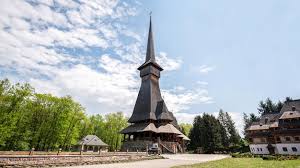Nestled along the stunning Adriatic coast of Montenegro, Kotora Melnkalne is a captivating destination that seamlessly blends rich history, breathtaking landscapes, and vibrant culture. Often referred to as the poetic embodiment of Kotor, this hidden gem offers travelers an authentic experience away from the typical tourist trail.
What Is Kotora Melnkalne?
The name “Kotora Melnkalne” is a lyrical variation of “Kotor,” a UNESCO World Heritage Site renowned for its medieval architecture and dramatic coastal scenery. The term “Melnkalne” translates to “dark mountain,” a nod to the towering limestone cliffs that encircle the Bay of Kotor, creating a fjord-like landscape that is both majestic and serene. This poetic moniker captures the essence of the town—its deep historical roots, its connection to nature, and its timeless beauty.
A Walk Through History
Kotor’s history spans over two millennia, with influences from the Romans, Byzantines, and Venetians shaping its development. The Old Town, encased within well-preserved medieval walls, showcases a blend of architectural styles, including Romanesque, Gothic, and Baroque. Key historical landmarks include:
- Saint Tryphon Cathedral: Built in 1166, this Romanesque cathedral is a testament to Kotor’s religious significance and architectural prowess.
- Maritime Museum: Housed in a former palace, this museum delves into Kotor’s seafaring history, displaying artifacts that narrate tales of naval exploration and trade.
- City Walls and San Giovanni Fortress: Stretching over four kilometers, these fortifications offer panoramic views of the town and the bay, reflecting the strategic importance of Kotor throughout history.
Natural Beauty and Scenic Views
The Bay of Kotor, often referred to as Boka Kotorska, is a natural wonder that enchants visitors with its serene waters and surrounding mountains. The bay’s fjord-like appearance, with steep cliffs plunging into the sea, creates a dramatic backdrop for the town. Activities such as sailing, kayaking, and hiking are popular ways to explore the area, offering unique perspectives of the landscape.
Cultural Experiences and Festivals
Kotora Melnkalne is a hub of cultural activity, with festivals and events that celebrate Montenegrin heritage. One of the most notable is Boka Night, an annual event featuring illuminated boats, fireworks, and traditional music, celebrating the region’s maritime culture. Other cultural highlights include folk music performances, art exhibitions, and culinary festivals that showcase local traditions and artistry.
Culinary Delights
The cuisine of Kotora Melnkalne reflects the town’s coastal location and rich cultural influences. Seafood is a staple, with dishes like grilled fish, octopus salad, and black risotto made from cuttlefish ink. Local specialties include:
- Njeguški pršut: A type of smoked ham from the nearby village of Njeguši.
- Vranac wine: A robust red wine produced from indigenous grapes grown in the region.
- Baklava and cherry pie: Traditional desserts that offer a sweet end to any meal.
Dining in Kotora Melnkalne is an experience in itself, with many restaurants offering meals with stunning views of the bay.
Outdoor Adventures
For those seeking adventure, Kotora Melnkalne offers a variety of outdoor activities. Hiking trails wind through the surrounding mountains, leading to historical sites like the San Giovanni Fortress and offering breathtaking views of the bay. The Ladder of Kotor, a series of steep steps leading up the mountain, is a challenging yet rewarding hike that provides panoramic vistas. Additionally, the nearby Mount Lovćen National Park offers opportunities for hiking, wildlife viewing, and exploring the mausoleum of the Montenegrin ruler Petar II Petrović-Njegoš.
Accommodation and Travel Tips
Kotora Melnkalne offers a range of accommodation options to suit different preferences and budgets. From boutique hotels within the Old Town to guesthouses and villas with views of the bay, visitors can find a place that meets their needs. When planning a visit:
- Best Time to Visit: Late spring to early fall offers pleasant weather and vibrant cultural events.
- Getting There: The nearest airport is in Tivat, approximately 8 km away. Alternatively, Podgorica and Dubrovnik airports are within a few hours’ drive.
- Local Currency: The Euro (€) is used in Montenegro.
- Language: Montenegrin is the official language, but English is widely spoken in tourist areas.
- Footwear: Comfortable shoes are recommended for exploring the cobblestone streets and hiking trails.
Nearby Attractions
Kotora Melnkalne serves as an excellent base for exploring the surrounding region. Nearby attractions include:
- Perast: A picturesque town known for its baroque architecture and the islands of Our Lady of the Rocks and St. George.
- Skadar Lake National Park: A haven for birdwatchers and nature enthusiasts, offering boat tours and hiking opportunities.
- Herceg Novi: A coastal town with a vibrant atmosphere, historic sites, and beautiful beaches.
- Mount Lovćen: A national park offering hiking trails, panoramic views, and the Njegoš Mausoleum.
Conclusion
Kotora Melnkalne is more than just a destination; it’s an experience that immerses visitors in the rich tapestry of Montenegrin history, culture, and natural beauty. Whether you’re wandering through the ancient streets of the Old Town, savoring local delicacies, hiking up mountain trails, or participating in lively festivals, Kotora Melnkalne offers a unique and unforgettable journey. As the world seeks more authentic and meaningful travel experiences, Kotora Melnkalne stands out as a beacon of timeless charm and allure.

